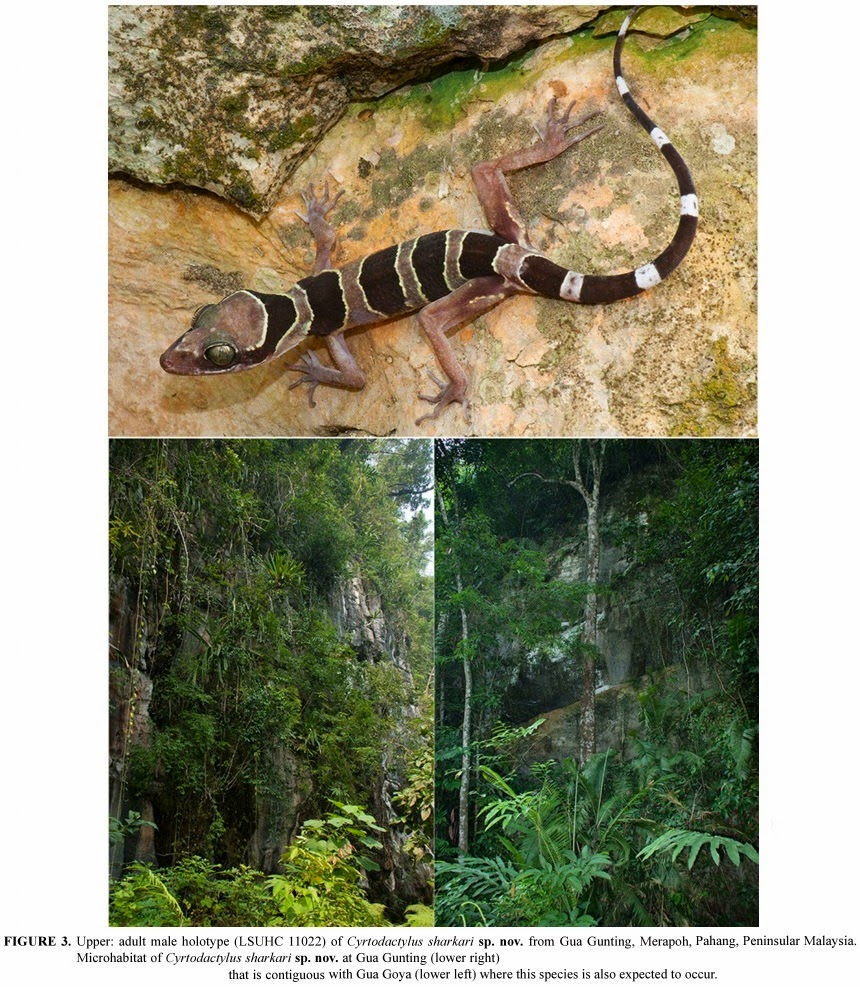Abstract
A new enarmoniine genus, Sirindhornia, n. gen., is described based on the type species, Sirindhornia pulchella, n. sp., and three additional new species: Sirindhornia chaipattana, n. sp., Sirindhornia curvicosta, n. sp., and Sirindhornia bifida, n. sp., all from Thailand. A fifth species represented only by a single female is morphologically characterized but not formally described. Sirindhornia is most closely related to Anthozela Meyrick and Irianassa Meyrick but is easily distinguished by unique appendages of the tegumen and a conspicuous henion in the male genitalia.
Keywords: Ang-Ed Community forest, Enarmoniini, Khao Nan National Park, new genus, new species, Olethreutinae, Trat Agroforestry Research and Training Station
Muadsub, Sopita & Nantasak Pinkaew. 2014. Sirindhornia Pinkaew and Muadsub (Lepidoptera: Tortricidae), A New Enarmoniine Genus from Thailand. Zootaxa. 3869(1): 53–63.
สกุลผีเสื้อกลางคืนสิรินธร (Sirindhornia) เป็นชื่อผีเสื้อกลางคืนสกุลใหม่ของโลกที่ได้รับพระราชทานพระนามจากสมเด็จพระเทพรัตนราชสุดาฯ สยามบรมราชกุมารีในวันที่ 30 พฤษภาคม พ.ศ. 2557 ผีเสื้อสกุลใหม่นี้เป็นผีเสื้อกลางคืนขนาดเล็ก จัดอยู่ในวงศ์ Tortricidae (วงศ์ผีเสื้อหนอนม้วนใบ) วงศ์ย่อย Olethreutinae เผ่า Enarmoniini ตัวอย่างของผีเสื้อในสกุล Sirindhornia นี้ได้จากการสำรวจผีเสื้อกลางคืนโดยใช้กับดักแสงไฟใน 3 พื้นที่ คือ
1.ป่าดิบชื้นของอุทยานแห่งชาติเขานัน จังหวัดนครศรีธรรมราช ในปี พ.ศ. 2550
2. พื้นที่สวนยางพาราเก่าอายุมากกว่า 50 ปี ที่ฟื้นสภาพเป็นป่าธรรมชาติในโครงการพัฒนาป่าชุมชนบ้านอ่างเอ็ด (มูลนิธิชัยพัฒนา) อำเภอขลุง จังหวัดจันทบุรี ในปี พ.ศ. 2554 และ
3.จากพื้นที่ป่าดิบชื้นในสถานีวิจัยและฝึกอบรมวนเกษตรตราด จังหวัดตราด ในปี พ.ศ. 2555
ผีเสื้อในสกุล Sirindhornia ค้นพบโดย ผศ.ดร.นันทศักดิ์ ปิ่นแก้วและทีมงานจากภาควิชากีฏวิทยา คณะเกษตร กำแพงแสน มหาวิทยาลัยเกษตรศาสตร์วิทยาเขตกำแพงแสน มีการค้นคว้าข้อมูลเพื่อเปรียบเทียบตัวอย่างรวมทั้งส่งไปให้ผู้เชี่ยวชาญในต่างประเทศตรวจสอบลักษณะต่างๆ และได้รับการยืนยันว่าเป็นผีเสื้อหนอนม้วนใบสกุลใหม่ของโลก
ผีเสื้อในสกุล Sirindhornia มีลักษณะโดดเด่นที่สีสันและลวดลายของปีกคู่หน้าที่มีโคนปีกสีขาวและปลายปีกสีแดง มีจุดแต้มและลวดลายบนปีกสีดำ รวมทั้งปีกคู่หลังมีแต้มสีเหลืองบริเวณกึ่งกลางปีก ลักษณะรูปร่างของรยางค์ปากที่เรียวยาวและตั้งขึ้นด้านบน รวมทั้งรูปร่างของอวัยวะสืบพันธุ์เพศผู้ที่ส่วนของ socii และ gnathos มีลักษณะเด่นและแตกต่างจากผีเสื้อสกุลอื่นๆ ที่อยู่ในเผ่า Enarmoniini อย่างชัดเจน
ผีเสื้อสกุล Sirindhornia มีการรายงานชนิดใหม่ของโลก 4 ชนิดด้วยกัน คือ Sirindhornia pulchella จากอุทยานแห่งชาติเขานัน Sirindhornia chaipattana และ Sirindhornia curvicosta จาก โครงการพัฒนาป่าชุมชนบ้านอ่างเอ็ด และ Sirindhornia bifida จากสถานีวิจัยและฝึกอบรมวนเกษตรตราด จากพื้นที่ที่ค้นพบผีเสื้อในสกุลนี้จะเห็นได้ว่ามีความสัมพันธ์ กับพื้นที่ที่มีสภาพเป็นป่าธรรมชาติ รวมถึงพื้นที่ที่มีการฟื้นฟูโครงสร้างและองค์ประกอบของพรรณไม้คล้ายสภาพป่าในธรรมชาติจึงอาจกล่าวได้ว่าผีเสื้อในสกุลนี้เป็นชนิดพันธุ์ที่สามารถบ่งชี้ถึงความอุดมสมบูรณ์ของพื้นที่ได้
พบ “ผีเสื้อกลางคืนสิรินธร” ผีเสื้อสกุลใหม่ในป่าชุมชน
http://astv.mobi/AXem6xI via @ASTVScience
































